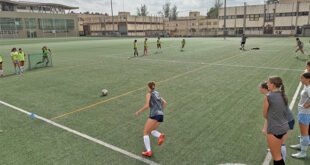“I spent a lot of time in the nothing box”
by Than Acuff
Well, it appears now a 100-mile race just isn’t quite enough, at least not for Crested Butte resident Benn Dunne. Dunne has competed in his fair share of Ultra running events, with the longest being 108 miles. And while the 100-mile race appears to have become the standard, Hardrock 100, Leadville 100, Bighorn 100, etc., for committed trail runners, Dunne opted to double-down, running in the Tahoe 200 Endurance Run Ultra September 8-12, finishing in just over 80 hours.
Dunne credits longtime Ultra runner and friend Kirk Apt for the decision to jump into the 200-mile race.
“I certainly wouldn’t have signed up if it wasn’t for Kirk,” says Dunne. “He said, ‘It’s easy, it’s just 50 miles, four days in a row.’”
While Dunne has a training program for 100-mile races, he adjusted his preparation accordingly to prepare for the 200-mile distance.
“I cut out the speed work entirely,” explains Dunne. “I did a lot of back-to-back-to-back long runs and added in ‘fast-packing,’ just getting used to sleep deprivation, getting used to sleeping uncomfortably and getting used to having my body in a depleted state—eighty-mile weeks all summer long just concentrated in two to three days and doing it slow.”
As if 205 miles of running isn’t enough, the trail itself is a bugger. So much so that one-third of the field did not finish the race. And while close to 180 miles of it is on beautiful single track deep in the woods or high on ridges overlooking Lake Tahoe, the course opens by following a section of a gnarly Jeep road known as the Rubicon, includes a powerline climb with not one, not two, but three false summits and has some segments of foot-pounding pavement thrown in the mix.
Top that off with the fact that the trail has close to 80,000 feet in vertical relief, half of that up and half down, throughout the entire course, making for numerous climbs in a variety of places with one of the toughest climbs coming around mile 175.
“They save one of the toughest climbs for near the end, of course, because it’s an Ultra,” explains Dunne. “It’s steeper than the Wall at the top of Walrod… and two miles long.”
Furthermore, the aid stations are spread out even farther than in a 100-mile race, leaving runners to adapt to longer stretches of running either carrying more water or hydrating along the way however possible.
“Every section between aid stations is so long, it’s such a mindf***,” says Dunne. “You have to carry enough with you to get you through eight hours. I just drank from streams figuring if I get sick, I’d get sick next week.”
This year, thanks to some vandalism prior to race day, participants had some route-finding to do early on as trail markers were removed. As a result, Dunne pulled out his GPS to try to follow the course, with several other runners following his lead.
“Almost half of the pack was out wandering around early in the race,” says Dunne. “I was leading a pack of about 30 runners because I had a GPS and through some miracle, we ended up back on the course.”
With experience in the 100-mile distance, Dunne had to readjust his strategy for a race twice as long, taking into account the idea of sleeping during a race and recalibrating his head to keep his pace consistent throughout the entire time no matter how good, or how bad, he was feeling.
He ran through the first night without sleep and planned on getting three hours the second night and go from there. In addition, the pace he picked was three miles an hour the entire time.
“I went with the 100-mile finishing shuffle the entire time,” says Dunne. “It took so much patience. I ran the downhills, but not like you run the downhills in a 100-miler. I saw people hammering on the downhills and I thought, what’s the point, I want to feel better tomorrow.”
 The Crested Butte News Serving the Gunnison Valley since 1999
The Crested Butte News Serving the Gunnison Valley since 1999


